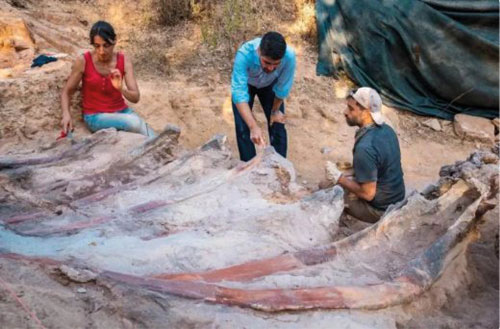A Portuguese man found remains of what scientists think could be the remains of the biggest dinosaur ever, in his backyard, reported Fox News.
An international research team is now uncovering the fossils. The man reportedly began noticing the fossilised bones years ago.
The colossal discovery had been years in the making. The property owner in Pombal, Portugal stumbled upon fossil fragments in his yard while doing construction work in 2017, researchers said. Researchers began their initial work that year.
The excavation team was impressed by how in-tact they found the remains, Elisabete Malafaia, a University of Lisbon researcher, said in the univer-sity’s press release. “It is not usual to find all the ribs of an animal like this, let alone in this position, maintaining their original anatomical position,” she said. “This mode of preservation is relatively un-common in the fossil record of dinosaurs, in particu-lar sauropods, from the Portuguese Upper Jurassic.”
Drought fossils: ‘Very distinct’ dinosaur tracks made 113 million years ago revealed by severe Texas drought
Only the ribs and vertebrae have come to light so far, but the paleontologists believe the rest of the skeleton may be buried nearby. Future excavations will tell.
Elisabete Malafaia, a postdoctoral researcher at the University of Lisbon said that it was unlikely to find ribs of a huge animal like this “maintaining their original anatomical position”.
She said that this particular mode of preservation was uncommon, especially in sauropods.
Sauropods lived from 160 to 100 million years ago and were herbivores. They are known today for their long necks and tails.
Reportedly, the man first noticed the bones in 2017 while doing construction work on his prop-erty.—Agencies










